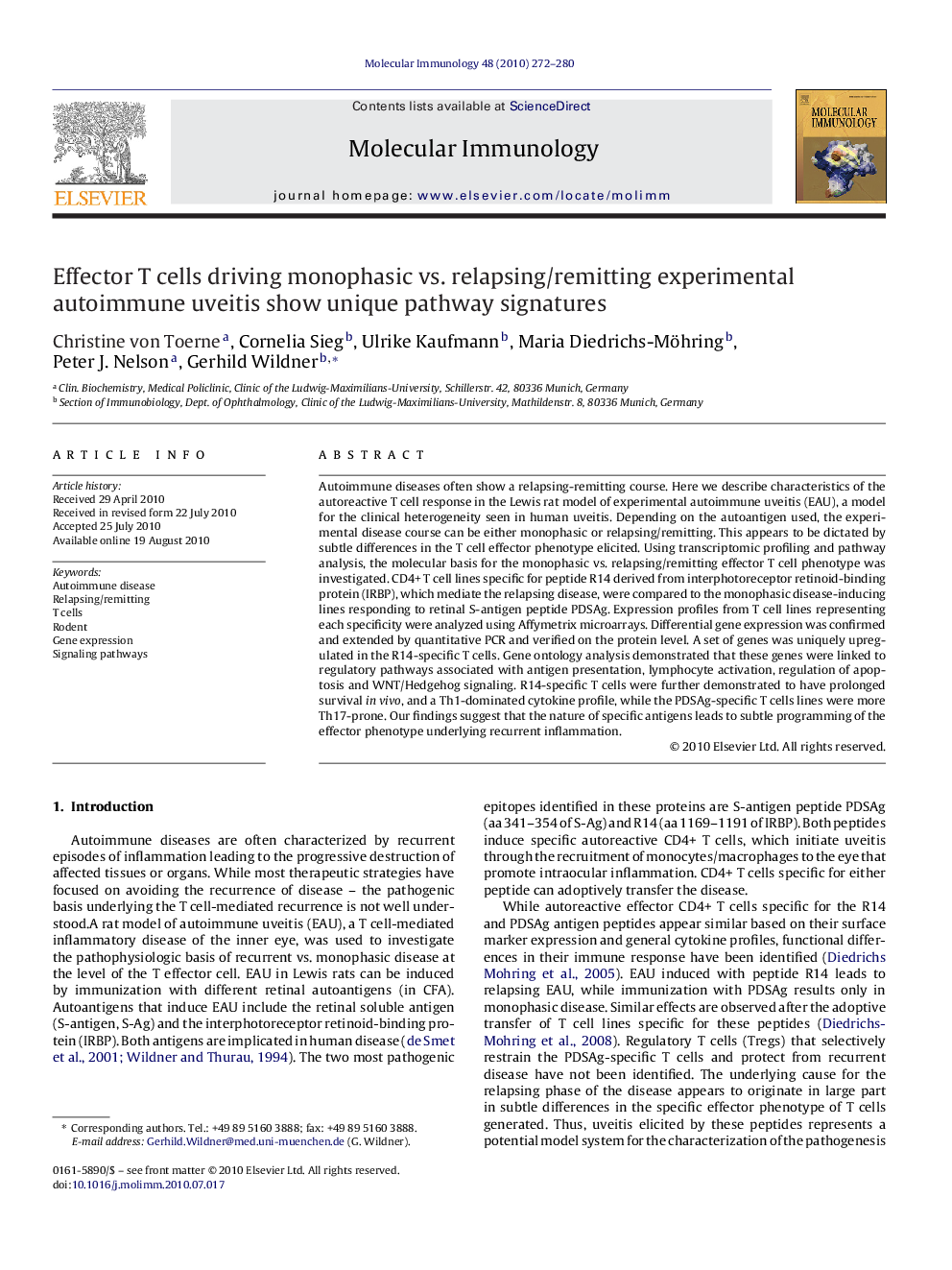| Article ID | Journal | Published Year | Pages | File Type |
|---|---|---|---|---|
| 2832018 | Molecular Immunology | 2010 | 9 Pages |
Autoimmune diseases often show a relapsing-remitting course. Here we describe characteristics of the autoreactive T cell response in the Lewis rat model of experimental autoimmune uveitis (EAU), a model for the clinical heterogeneity seen in human uveitis. Depending on the autoantigen used, the experimental disease course can be either monophasic or relapsing/remitting. This appears to be dictated by subtle differences in the T cell effector phenotype elicited. Using transcriptomic profiling and pathway analysis, the molecular basis for the monophasic vs. relapsing/remitting effector T cell phenotype was investigated. CD4+ T cell lines specific for peptide R14 derived from interphotoreceptor retinoid-binding protein (IRBP), which mediate the relapsing disease, were compared to the monophasic disease-inducing lines responding to retinal S-antigen peptide PDSAg. Expression profiles from T cell lines representing each specificity were analyzed using Affymetrix microarrays. Differential gene expression was confirmed and extended by quantitative PCR and verified on the protein level. A set of genes was uniquely upregulated in the R14-specific T cells. Gene ontology analysis demonstrated that these genes were linked to regulatory pathways associated with antigen presentation, lymphocyte activation, regulation of apoptosis and WNT/Hedgehog signaling. R14-specific T cells were further demonstrated to have prolonged survival in vivo, and a Th1-dominated cytokine profile, while the PDSAg-specific T cells lines were more Th17-prone. Our findings suggest that the nature of specific antigens leads to subtle programming of the effector phenotype underlying recurrent inflammation.
